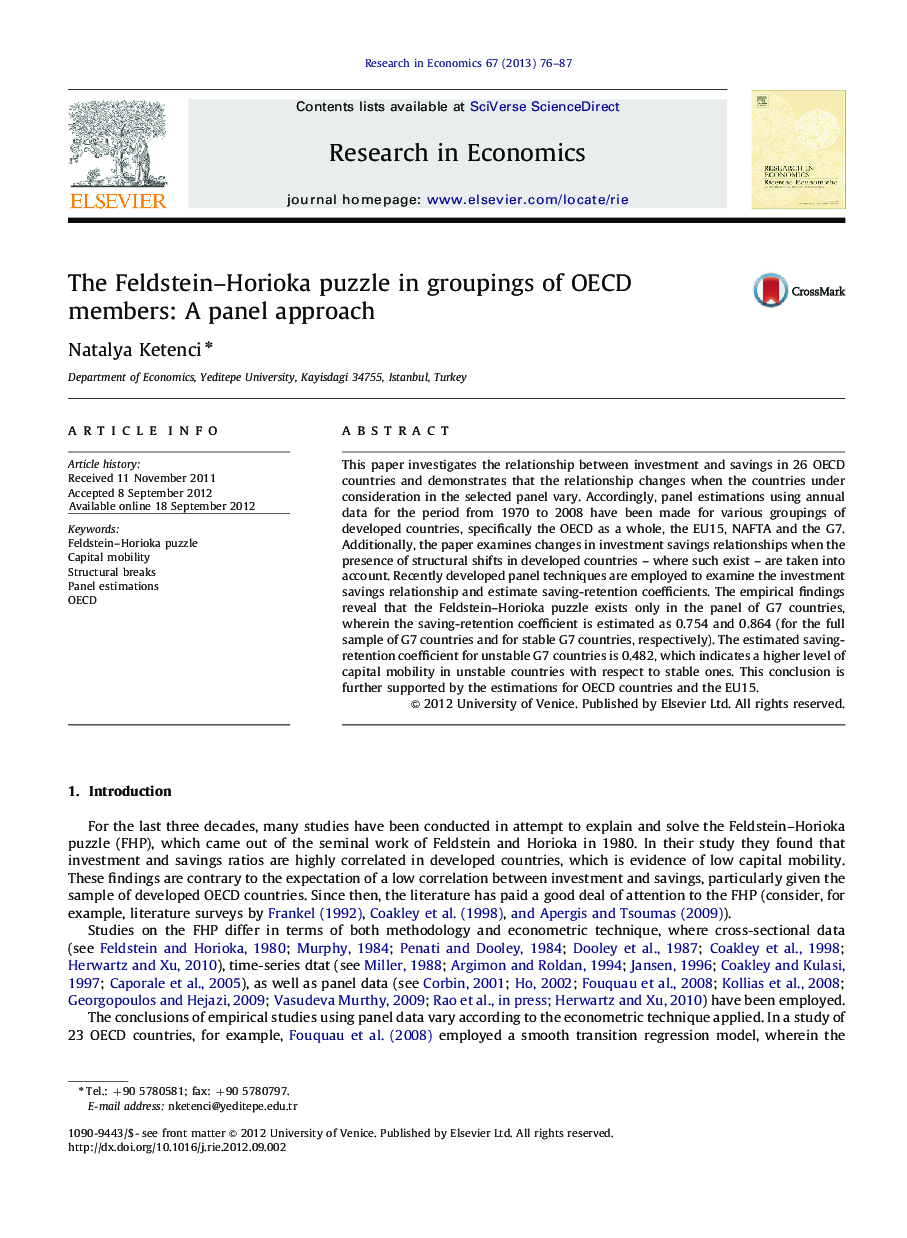| Article ID | Journal | Published Year | Pages | File Type |
|---|---|---|---|---|
| 983530 | Research in Economics | 2013 | 12 Pages |
This paper investigates the relationship between investment and savings in 26 OECD countries and demonstrates that the relationship changes when the countries under consideration in the selected panel vary. Accordingly, panel estimations using annual data for the period from 1970 to 2008 have been made for various groupings of developed countries, specifically the OECD as a whole, the EU15, NAFTA and the G7. Additionally, the paper examines changes in investment savings relationships when the presence of structural shifts in developed countries – where such exist – are taken into account. Recently developed panel techniques are employed to examine the investment savings relationship and estimate saving-retention coefficients. The empirical findings reveal that the Feldstein–Horioka puzzle exists only in the panel of G7 countries, wherein the saving-retention coefficient is estimated as 0.754 and 0.864 (for the full sample of G7 countries and for stable G7 countries, respectively). The estimated saving-retention coefficient for unstable G7 countries is 0.482, which indicates a higher level of capital mobility in unstable countries with respect to stable ones. This conclusion is further supported by the estimations for OECD countries and the EU15.
► This paper investigates investment savings relationships in 26 OECD countries. ► OECD, EU15, NAFTA and G7 groups are estimated for the period 1970–2008. ► Structural shifts are considered in countries where they exist. ► The Feldstein–Horioka puzzle exists only in the panel of G7 countries. ► Higher level of capital mobility is found in unstable countries in G7, OECD, EU15.
